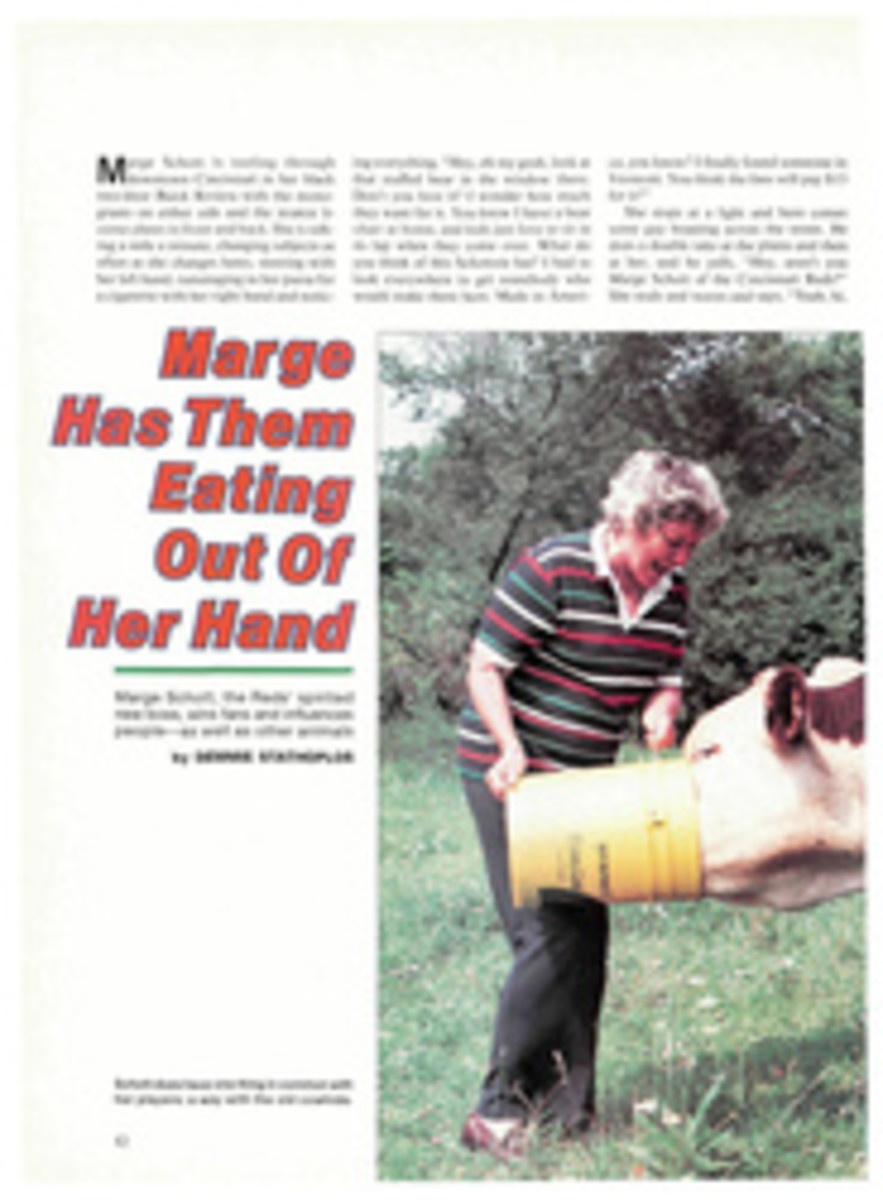
THIS ROADRUNNER DIDN'T SAY "BEEP! BEEP!" HE COOED AND KEPT HIS COOL
When I am on a fishing vacation, I try to begin each day with an early-morning run. A few miles can make a hotel breakfast a deserved pleasure—and can also enhance the sedentary enjoyment of casting lures and flies for the rest of the day. But last spring, toward the end of a week of fishing in Loreto, on the Baja peninsula, my morning run turned into more of a workout than I had bargained for.
I set off well before sunrise and began with a couple of miles on the beach, watching the eastern sky over Carmen Island lighten to orange. Then, warm and loose, I cut west along a dusty, rutted road toward the Sierra de la Giganta Mountains. Soon the road became a trail, with an arroyo running parallel on the right. I bounded up a short, steep hill and started down the other side. That's when I saw the roadrunner. He was standing about 30 yards in front of me, at the side of the trail between two clumps of sage, looking back over his shoulder.
I stopped in my tracks and blinked, then stared. The bird stood motionless, staring back. Nearly two feet tall, he had a bluish crown, a brown-and-white mottled back, a long white-tipped tail, strong legs and large four-toed feet. And there was something about him: In the gleam in his eye, in the way he looked back with his head cocked slightly to the side, this bird had the unmistakable aura—no other term quite fits—of a smart aleck.
Why not chase it? I thought. I was feeling strong and confident. Some days are like that, even for middle-aged men. I knew that roadrunners are capable of ground speeds of up to 20 miles per hour (a three-minute-mile pace), but I doubted one could hold that speed for long. I also knew that they seldom fly. This was rough country, but vegetation was sparse enough so that I would be able to keep my adversary in sight. There was no chance I could actually catch the roadrunner—nor would I want to, because they are capable of killing rattlesnakes—but perhaps I could make it fly. Forced flight would constitute an indignity for an arrogant bird, and that, I decided, would be my victory.
I plotted my strategy. All the conditions suggested a hard, sudden sprint: The sun was directly behind me; it was downhill all the way to the bird; and I had the element of surprise on my side, too. It was possible that this fellow had never seen a human being before, and he had surely never known one to come straight at him first thing in the morning.
I took a deep breath and charged down the hill, screaming and waving my arms wildly. I was no more than 15 yards away from the roadrunner, but he hadn't moved a feather. Ten yards. His dark eyes glittered in the morning light. I thought I saw his tall body tense. When I was five yards away, he turned his head.
Suddenly the roadrunner was gone. At my feet where the bird had been was a small cloud of fine brown dust. Streaking through the sagebrush and cacti alongside the trail ahead of me was a brownish blur, and by the time I had judged the distance between us at 30 yards, the bird had doubled it.
I started after him at a pace I thought I could hold for a good half mile if I had to. Within seconds I was conscious of my labored breathing and of my feet pounding the sun-baked earth. My right foot hit a large stone and I swore in pain.
The roadrunner stayed close to the trail, occasionally swerving around a clump of sage or the trunk of a saguaro cactus. He was an impressive runner, all right, stiff-legged and leaning slightly forward. About half a minute after I had started in pursuit I heard him call—a sound like the cooing of a dove, but somewhat louder and deeper. Both his running posture and the call struck me as further indications of his cockiness. In a minute I had cut the distance between us in half. Then he stopped abruptly and looked back at me again. Maybe he is finished, I thought.
Now we were on level ground, and I tried another sprint. When I was 20 yards away, he dashed off, did a quick left turn, crossed the trail and ran through some flowering cactus plants with swordlike leaves. Off the trail the earth was sandy, making it much more difficult to run. Already I was sweating hard and panting for breath, but I succeeded in shortening his lead again. I also cut my right arm just below the elbow, on one of the cactus plants. Varying his speed but never stopping, the roadrunner veered gradually to the right in what finally became a full circle that brought us back to the point where we had left the trail.
Concentrating on both the roadrunner out ahead and the ground directly in front of my feet was making running more difficult, and I was tiring. The roadrunner recrossed the trail, then disappeared down into the arroyo. When I jogged up to the edge, I saw him perched on a rounded boulder 15 yards away. I should have given up then: The arroyo was at least 10 feet deep and 20 feet across in places, and some of the boulders dotting its floor were the size of cars. There had to be rattlesnakes down there among the rocks, and it was a place where a runner could take a brutal spill.
I started down after him, and he cooed again. Before I got anywhere near him, he started hopping from boulder to boulder without apparent effort, heading toward the mountains a mile or more away. Every time I climbed down after him, he hopped away ahead of me, and when I climbed back out of the arroyo, he sat there on a rock looking at me. Finally I got the fall I had worried about, and a long, bloody scrape below my left knee.
At that, I knew I had had enough. My right big toe was bruised and swollen from the rock I had kicked, and my right arm and left leg were bleeding freely. I was soaked with sweat and coated with dust. I was nearly exhausted. The last time I saw the roadrunner, he was perched atop another boulder, eyeing me superciliously and certainly none the worse for wear.
As I jogged back toward the hotel, I realized it was Saturday morning. It occurred to me that I was well-battered proof that life, often known to imitate art, can imitate cartoons, too.
ILLUSTRATION
ARNOLD ROTH

